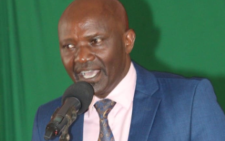How dual dollar exchange rate is hurting economy

The existence of two exchange rates for the dollar in the country has spiked the cost of living and made it harder for Kenyans to do business, experts have warned yesterday.
They said the two-dollar exchange run concurrently whereby one has the official Central Bank of Kenya (CBK) published rates while the other one is set by individual commercial banks when customers go to exchange dollars at bank halls.
While banks buy dollars at the exchange rate prescribed by CBK, they sell them at their own rates, usually way higher than the CBK rate.
This difference which is usually referred to as spread goes to the lenders but disenfranchises customers most of whom use the money to import goods.
This has resulted in exporters withholding their dollars for fear that if they give them to banks buying them back will be too expensive.
“Today we have two rates. There’s an official one that the government says is the official rate. When it is at Sh122, unofficially in the bank if you go and buy you are charged Sh130. The unofficial one goes even up to Sh145,” said former Mandera Senator, Billow Kerrow.
Banking regulator
Kerrow blamed CBK for the existence of the dual exchange rate, saying the banking sector regulator has intentionally maintained a low exchange rate with the aim of protecting government by making it easier to service external debts.
The government is required to pay millions of dollars every year to service external debts. The amount of shillings needed for this rises significantly when the exchange rate shifts in favour of the dollar.
Currently, public debt stands at Sh9.1 trillion, a significant portion of which will be paid back in dollars.
“The Central Bank has been fixing the exchange rate for the last two years. This is why we have a dollar shortage. I’m in business and I know. We have spoken about this for the last two years,” Kerrow said.
According to Samuel Nyandemo, a senior economic lecturer at the University of Nairobi, other factors that are contributing to the dollars shortage in the country include reduced dollar inflow due to a decline in international tourist arrivals and dwindling exports due to economic hardships in Europe.
Additionally, the war in Ukraine has seen petroleum and food prices rise globally increasing the demand for dollars among local importers.
In March, the United States Federal Reserve raised the base lending rate by 0.25 per cent to five per cent in a bid to tame inflation, making it more expensive for countries such as Kenya to acquire dollars. Both Nyandemo and Kerrow are of the view that to increase dollar availability in the country, the government should leave the determination of the dollar exchange rate to market forces.
Market forces
“We must set free the exchange rate so that it is settled by the market forces of demand and supply,” Nyandemo said.
While so doing will result in an initial jump in external debt, it will end the dollar shortage making it easier for people to do businesses in the country.
Manufacturing firms have complained of the challenges ofaccessing dollars from local banks to fund capital goods imports, threatening product shortages which could push up consumer goods prices.
Kenya Association of Manufacturers (KAM) is also on record saying that lack of access to hard currency is negatively affecting their members’ ability to settle obligations to overseas suppliers in a timely manner.











